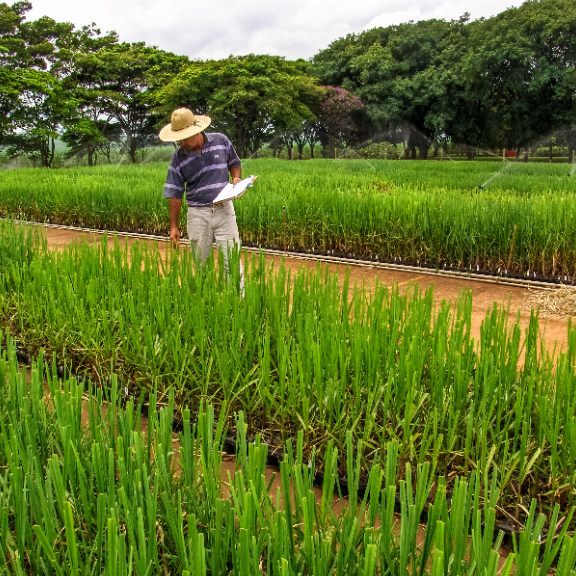Visual Inspection
Visual inspection is an integral aspect of monitoring the health and vitality of a sugarcane crop. It involves a hands-on, observational approach where farmers and agronomists visually assess the crop's appearance, leaf condition, and overall growth. This human-centered method of evaluation is a fundamental yet powerful tool in detecting early signs of stress, diseases, or nutritional deficiencies in sugarcane fields. Let's delve into the details of visual inspection and its significance in maintaining a robust sugarcane crop:
1. Leaf Color and Vigor: Visual inspection begins with an analysis of the color and vigor of the sugarcane leaves. Healthy leaves should exhibit a vibrant green color, indicating optimal chlorophyll production for photosynthesis. Any deviations, such as yellowing or browning, can be indicative of nutrient deficiencies, diseases, or environmental stress.
2. Uniformity of Growth: Observing the uniformity of growth across the field is crucial. A healthy sugarcane crop should display consistent height, leaf size, and tillering. Discrepancies may suggest uneven nutrient distribution, irrigation issues, or the presence of pests.
3. Signs of Pests and Diseases: Visual inspection is a frontline defense against pests and diseases. Farmers and field workers closely examine sugarcane plants for any unusual markings, lesions, or signs of infestation. Early detection allows for targeted pest management strategies, minimizing potential crop damage.
4. Emergence of Shoots: Observing the emergence of shoots or tillers provides insights into the crop's vigor and potential yield. A uniform and timely emergence indicates favorable growing conditions. Irregularities may signal issues like soil compaction, inadequate water supply, or nutrient imbalances.
5. Presence of Weeds: Weed competition is a common challenge in sugarcane fields. Visual inspection involves identifying and assessing the density of weeds. Weeds compete with sugarcane for nutrients, water, and sunlight, and their presence can hinder the crop's growth.
6. Leaf Lesions and Diseases: Close inspection of leaves helps identify lesions, spots, or abnormal discolorations, which may indicate the presence of diseases. Common sugarcane diseases like rust, smut, and mosaic can often be identified through characteristic symptoms on leaves.
7. Inflorescence Development: Observing the development of inflorescences is crucial, especially in varieties intended for seed production. Visual cues, such as the emergence and structure of flowering heads, provide insights into the crop's reproductive stage and potential seed yield.
8. Soil Conditions Around Plants: Examining the soil around sugarcane plants complements visual inspection. Cracked soil, waterlogged conditions, or unusual soil discolorations can be indicative of drainage issues, compaction, or underlying soil health concerns.
9. Growth Anomalies: Visual inspection allows for the identification of growth anomalies such as stunted or malformed plants. These anomalies may be attributed to various factors, including pests, diseases, nutrient imbalances, or environmental stressors.
10. Documenting Findings: Part of visual inspection involves documenting findings systematically. This includes noting the location and severity of any observed issues. Keeping detailed records aids in tracking changes over time, making it easier to implement targeted interventions.
Significance of Visual Inspection: Visual inspection serves as an early-warning system, allowing farmers and agronomists to detect issues promptly. Its simplicity and immediacy make it a cost-effective and accessible method for monitoring large expanses of sugarcane fields. By honing their observational skills, farmers can make informed decisions that contribute to the overall health and productivity of the sugarcane crop.
In conclusion, visual inspection is an art embedded in the science of sugarcane crop management. Its effectiveness lies in the keen eyes of those who walk the fields, connecting with the crop on a direct and intimate level. This method, when integrated into a comprehensive crop management strategy, enhances the overall resilience and success of sugarcane cultivation.

